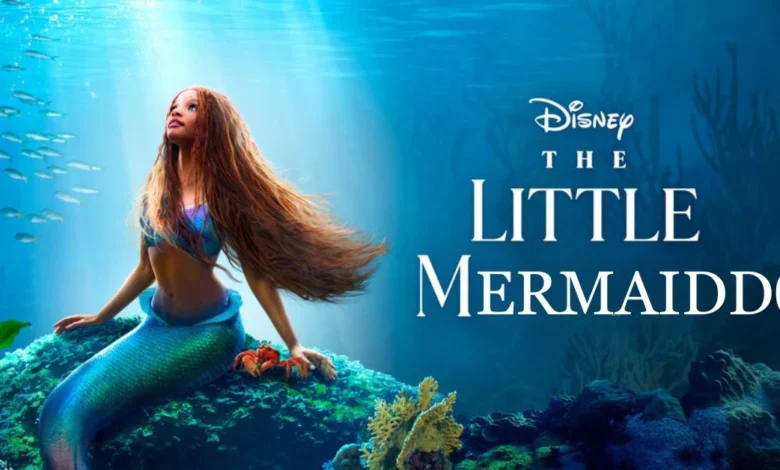The little_mermaidd0: A Timeless Tale of Magic and Adventure

Who hasn’t heard of “The Little Mermaid”? This enchanting tale has captured hearts for generations with its mix of magic, adventure, and deep emotional resonance. From its origins as a Danish fairy tale to its global fame through Disney’s animated classic, “The Little Mermaid” remains a beloved story that continues to inspire and entertain.
History of “The Little Mermaid”
The story of “The Little Mermaid” was originally penned by Danish author Hans Christian Andersen and published in 1837. Andersen’s tale was a departure from traditional folk tales, weaving complex emotions and a poignant ending that left a lasting impression on readers. Andersen’s influence on children’s literature is immense, with “The Little Mermaid” standing as one of his most celebrated works.
Plot Summary
“The Little Mermaid” tells the story of a young mermaid princess who dreams of life on land. Fascinated by the human world, she saves a prince from drowning and falls deeply in love with him. Desperate to be with him, she makes a dangerous deal with a sea witch, trading her voice for legs. The tale unfolds with themes of love, sacrifice, and the quest for one’s true identity, culminating in a bittersweet ending.
Themes and Motifs
The story explores profound themes such as love and sacrifice, where the little mermaid’s love for the prince drives her to give up her most prized possession – her voice. Transformation and identity play crucial roles as she navigates her new life on land, striving to fit into a world that is foreign to her. Fate and destiny are ever-present, guiding her journey and ultimate fate.
Character Analysis
- The Little Mermaid: A symbol of innocence and determination, she embodies the struggle between following one’s dreams and the harsh realities of life.
- The Sea Witch: Representing the darker forces of the world, she manipulates the mermaid’s desires for her own gain.
- The Prince: Often seen as the embodiment of the little mermaid’s idealized dreams, he remains largely unaware of her sacrifices.
Cultural Impact
“The Little Mermaid” has seen numerous adaptations across various media, from ballets and operas to films and television series. Each adaptation brings a new perspective to the tale, contributing to its rich cultural tapestry. The story’s themes and characters continue to resonate, making it a staple in popular culture.
Disney’s “The little_mermaidd0
Disney’s 1989 animated film adaptation brought “The Little Mermaid” to a new generation. The film, while staying true to the essence of Andersen’s tale, introduced significant changes, including a more uplifting ending. Ariel, the mermaid protagonist, became an iconic Disney princess, beloved by fans worldwide.
Music and Songs
The film’s soundtrack, composed by Alan Menken with lyrics by Howard Ashman, features unforgettable songs like “Part of Your World” and “Under the Sea.” These songs not only enhanced the narrative but also cemented the film’s place in the hearts of audiences.
Visual and Artistic Elements
Disney’s animation style for “The Little Mermaid” showcased vibrant underwater scenes and expressive character designs. The artistry involved in bringing the underwater world to life contributed significantly to the film’s success and visual legacy.
Lessons and Morals
At its core, “The Little Mermaid” teaches us about the lengths one will go for love and the importance of self-discovery. It reminds us that while pursuing our dreams is vital, we must also be prepared for the sacrifices they may entail.
Modern Interpretations
Recent years have seen a surge in new adaptations and retellings of “The Little Mermaid.” From live-action films to modernized literary versions, the story continues to evolve, reflecting contemporary themes and societal issues.
Controversies and Criticisms
While “The Little Mermaid” is beloved by many, it has also faced criticism. Some argue that the original tale’s ending is too melancholic for children, while others debate the portrayal of gender roles and the implications of the mermaid’s sacrifices in modern adaptations.
Legacy of “The Little Mermaid”
The legacy of “The Little Mermaid” is undeniable. Its influence spans literature, cinema, and popular culture, ensuring that Andersen’s tale will continue to enchant future generations. As new adaptations emerge, the story’s core themes remain relevant, highlighting its timeless appeal.
Conclusion
In summary, “The Little Mermaid” is a tale that transcends time and culture. Its journey from a Danish fairy tale to a global phenomenon showcases its enduring power and the universal themes it explores. Whether through Andersen’s original story or Disney’s animated film, “The Little Mermaid” will continue to inspire and captivate audiences for years to come.
FAQs
What is the original story of “The Little Mermaid” about?
The original story, written by Hans Christian Andersen, follows a young mermaid who sacrifices everything to be with a human prince she loves, ultimately facing a bittersweet fate.
How does the Disney adaptation differ from the original?
Disney’s version introduces a happier ending and a more adventurous tone, focusing on Ariel’s dreams and her journey to find love and happiness.
What are the main themes of “The Little Mermaid”?
Key themes include love and sacrifice, transformation and identity, and the interplay of fate and destiny.
Why is “The Little Mermaid” still popular today?
Its timeless themes, memorable characters, and the emotional depth of the story continue to resonate with audiences of all ages.
Are there any new adaptations of “The Little Mermaid”?
Yes, recent years have seen various new adaptations, including live-action films and modern literary retellings that bring fresh perspectives to the classic tale.


